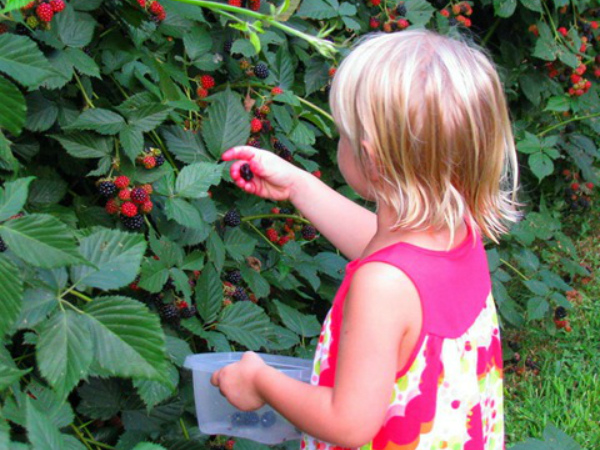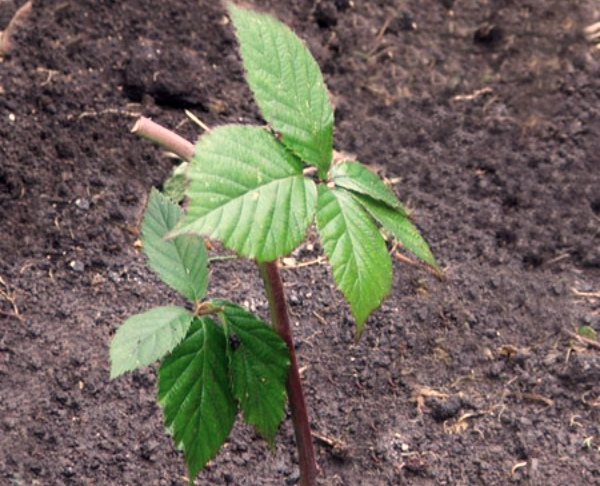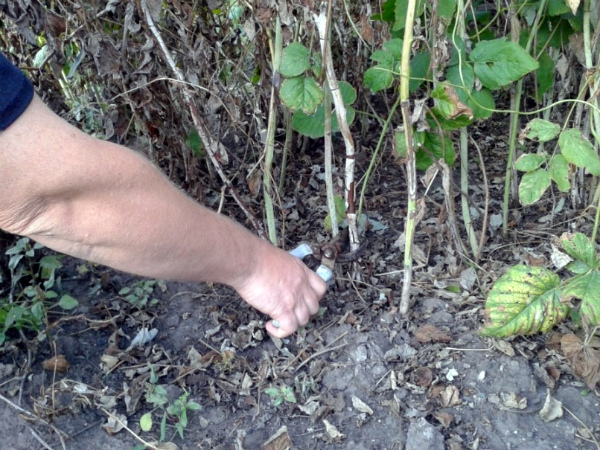Blackberries without thorns: planting and care
Content
General information about the culture
Today, even in the Moscow region, you can grow a variety of blackberry varieties without thorns, they will only slightly differ in the shape of the berries, the timing of fruiting and the subtleties of care. The thornless garden blackberry is a creeping shrub with a two-year cycle. During the first year of life, young shoots have time to grow, which are sent to winter. The next year, such shoots begin to actively bear fruit, while the next young growth is developing. Those branches that have already gifted you with their fruits are completely cut off in the fall.
The culture is a shrub that develops a powerful root system, with a deep bedding. Thanks to this feature, blackberries are able to tolerate dry periods, and they do not require additional specific care. The plant is perennial, it can grow up to 3 m in height. Under natural conditions, and if the bushes are not properly cared for and regularly pruned, it can form dense thickets.
Care advice
The blackberry cannot be called a capricious berry. It develops well, bears fruit abundantly. It is enough to choose the right place in which planting is planned, not forgetting that the plant needs special care - it is better to cover the bushes for the winter.
As soon as the planting of the bush is done, get ready for the next stage - very soon the blackberry bush will need a garter. Shoots are tied to special trellises, which greatly facilitate access to fruits and plant care.
The plant is actively developing and forming many young shoots, which in the future can be used by forming picturesque hedges from blackberry plantings.
Experienced gardeners recommend removing all inflorescences from a young bush, which is in its second year. By not allowing the plant to bear fruit, you are doing a great service to the root system by giving it ample time to root.
In summer, the soil around the bush is regularly loosened (up to 3 times per season) and watered regularly.
Landing technology
Garden blackberry is a light-loving culture. At the stage when planting is planned, choose well-lit areas, otherwise the bush will lag behind in development, respectively, it will be worse to bear fruit. If the chosen place is not protected from the winds, your bushes will often break - in spring and autumn it is windy in the Moscow region, and blackberries are quite vulnerable in this regard.
Young bushes are planted to a depth of half a meter, maintaining a distance between the rows of about 2 m, and the bushes are spaced from each other at intervals of 0.8 m.The prepared hole is watered abundantly, and the seedling is cut, leaving shoots no longer than 30 cm, the soil around the root is mulched ...
Do not get carried away with organic fertilizers at the stage of planting bushes: such feeding stimulates active growth and fruiting, the plant may not have time to develop the root system, and accordingly, it will be weak before leaving for the winter.
Formation
Blackberries without thorns, like raspberries, form stems with a two-year lifespan.Autumn care for the bush consists in high-quality pruning: all shoots that have completed their fruiting mission must be removed. Thus, the bush will thin out considerably, and young branches will become clearly visible, which, in turn, must also undergo pruning: they are shortened, leaving shoots no more than 2 m long. The preparatory stage is completed, and the bush can go to winter.
In the spring, the shoots are carefully examined again, if some of them are damaged, they also need to be cut off. Some gardeners practice pinching young branches in order to increase the yield of the bush for the next year.
Diseases and pests
The main enemies that can pose a danger to a crop such as blackberries are white bloom or blackberry mites. In order to prevent damage to plants, they need to provide appropriate care: regularly spray the bushes with a decoction of field horsetail, which plays the role of a good prophylactic agent. If a disease with the culture still happened, use scorch or saprol for processing.
Blackberries are not yet quite a familiar culture for Russian gardens, but they are already confidently gaining popularity, advancing by leaps and bounds to success. And no wonder. The berry bears fruit abundantly, the fruits are tasty and extremely useful, moreover, there is no need to provide specific care for the bushes. A true gardener's dream!
Video "Growing a thornless blackberry"
The author of this video has been growing thornless blackberries for many years. In this video, he shares his experience in growing berry crops, planting them, feeding, pruning and much more.




